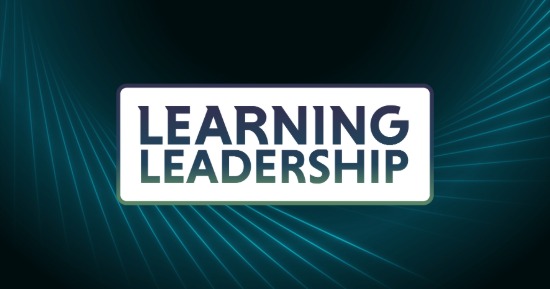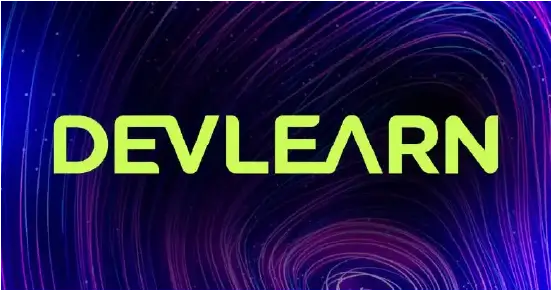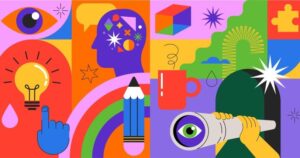To be professional, we are supposed to make decisions based upon the underpinnings of our profession. That includes knowing how learning works, and using processes that align with what’s known about learning science. Yet, given what we see from learning organizations, this knowledge is not sufficiently distributed. So here’s a whirlwind tour.
Don’t worry—this is not a full course in cognitive science (though I’d recommend one). But it’s enough to steer you away from some common mistakes.
At the lowest level
Our brains are networks of neurons, bringing information through our sense organs and processing it to yield responses through muscular action. There are regions of the brain that specialize in particular types of activity, but what matters ultimately is the approximations we can make that give us leverage.
Patterns of activation across the neural networks represent our current state of thinking, and learning is strengthening the links between these patterns. These patterns include what we already know and what the current context is.
It’s important to know that we don’t address individual neurons. What triggers these patterns, particularly from the perspective of instruction, are words and images. In short, we operate at a level above the neural level, the cognitive level. Most of the so-called “neuro” programs and offerings are really working at the cognitive level (except for marketing).
The ‘store’ story
A useful model of cognition for making decisions starts with theorized structures in the brain that represent the storage of information. We talk about sensory store, working memory, and long-term memory. The properties of these stores, and the processes that transfer information between them, become the basis for understanding learning and making decisions about facilitating useful learning.
As the name implies, information comes into sensory store from our senses. There’s a continual stream, so sensory store is vast in terms of capacity (think of the amount of available visual information), but of short duration. What’s attended to moves on to working memory. It’s stored in the format that it is perceived: visual image, auditory trace, etc.
Working memory is our conscious thinking. It’s quite limited in capacity, with a useful guide of no more than five ‘chunks’. The chunks are variable. They’re what we perceive and know, and as a novice they’re limited. Learning creates more complex chunks, supporting richer processing and decision making. Building useful chunks is one of the functions of learning. The current context, as coded through our understanding, are the elements we use to make decisions. Working memory is construed to be largely linguistic, and it is where we make the decisions to act.
Long term memory is where what we learn resides. It’s vast and semantic. That latter means that we don’t store information exactly, but by its meaning, and re-infer each time we bring it up in new contexts. (Which means we’re inherently challenged to perform rote activities reliably.) There’s an argument that we never actually forget anything (ever have the experience of a trigger bringing back a memory you thought was long gone?), but we may lose access to it. So we don’t really ‘unlearn’; instead we have to learn ‘over’, rewriting those neural associations. Expertise from long-term memory can also guide automated actions that don’t require conscious processing.
Processes and processing
Attention is the process that takes information from sensory store to working memory. As working memory is limited, attention is a focusing role. It’s largely volitional, though specific things can capture our visual or auditory attention. We have the option to switch attention every 250 milliseconds or so, but can focus for hours. What is needed for learners is to have support for removing distractions, and helping know what to attend to.
Rehearsal keeps information in working memory, but what transfers information to long-term memory is elaboration. Extending information by connecting it to what’s already known, whether personal experience or conceptual frameworks, is key. This is why learning design should play off of prior knowledge. What makes long-term memory useful, however, is the process of retrieval. And, for doing meaningful tasks, that means not bringing up rote and abstract information, but instead bringing up that information to apply it in ways that mimic the ways that the performer will need to act in the workplace.
The goal of learning is to create chunks whereby certain parts of the task happen subconsciously, and conscious memory can be used to do the meaning-making that does the important decision-making. We want automatic operation of low-level tasks (think: operating the gas pedal and brake pedal while driving, freeing us to consider navigation). Note that this automatization means that 70 percent of what experts actually do is inaccessible to their conscious awareness, and that you can’t just expect SMEs to be able to provide what learners need.
Emergent phenomena
Our architecture supports some amazing capabilities, and some limitations. Important factors leading to successful learning include spacing, models, and examples. An area of concern and opportunity is in errors.
Practice is critical to learning, as the retrieval story shows. More is required. The strengthening between neural networks can only happen so much in any one day, and then rest is needed. Which means learning must be spaced over time to be effective. The level of practice seen needs to be at the right level of challenge to develop the skill. It has to stretch the learner in particular ways, challenging him or her. And as learner expertise grows, so too should the difficulty.
We create explanations of how the world works; causal models that allow us to predict what will happen and explain what has happened. However, if we create an inaccurate model, we don’t tend to search for a replacement—we tend to patch the existing model. Thus, it’s important to provide good models to guide performance.
We also need examples that show how those models play out in practice. We need to see the concept connected to the context in different ways to help our brains pattern-match and extract the underlying principles that can be reapplied. These examples should also illustrate the underlying thinking, showing how the concept was explicitly tied to the context and the reasoning that led to the decision made, to support internalization. Even better, showing a mistake and backtracking to repair, helps learners internalize self-monitoring.
Our errors typically aren’t random, but patterned. There is some randomness in our mental architecture, which is evolutionarily adaptive, but that’s only a small proportion of error (and argues again against rote performance; automate it!). Instead, mistakes tend to be based upon mis-applied models. And it’s better to make those mistakes in practice, before it counts. Thus, the alternatives to the right answer in practice shouldn’t be silly or obvious, but reflect the ways they do go wrong. Which makes it easy to meet the challenge requirement stipulated above.
Leadership lessons
The purpose of this overview is to extract some important lessons and provide a framework to meet new leadership decisions. This may seem like an overview for learning design, and it is a basis, but it also provides the structure to interpret new claims.
For one, distractions like learning styles, attention span of a goldfish, neuro-this and brain-based that, unlearning, etc., will keep you from investing in the right approaches. Gilded bad design is still bad design. Get the core of learning right before you start trying to apply new approaches like adaptive, VR, AR, and more.
Second, you should now have a sound basis to evaluate your learning design process. Are you working appropriately with SMEs to address their lack of access to their decision making? Are you ensuring sufficient meaningful practice, resourced with the minimal quantity and maximum quality of models and examples for real outcomes? Are you minimizing attentional distractions and ensuring appropriate chunking?
With a good learning design process at the core, you’re ready to start exploring advances like those mentioned earlier. There are other issues, including emotional and social here, but they’ll play a role, too. To make good decisions and achieve good learning outcomes, the right cognitive background is critical. A learning decision maker basing approaches on an understanding of learning is equipped to be an effective leader, and that’s the goal.
Note from the editor
Clark Quinn will present a session titled “The Actual Reality of VR and AR: Cognition and Experiences” at The eLearning Guild’s Realities360 conference on June 25, 2019. Register for the conference and learn more about how emerging technologies such as VR and AR impact cognition.










